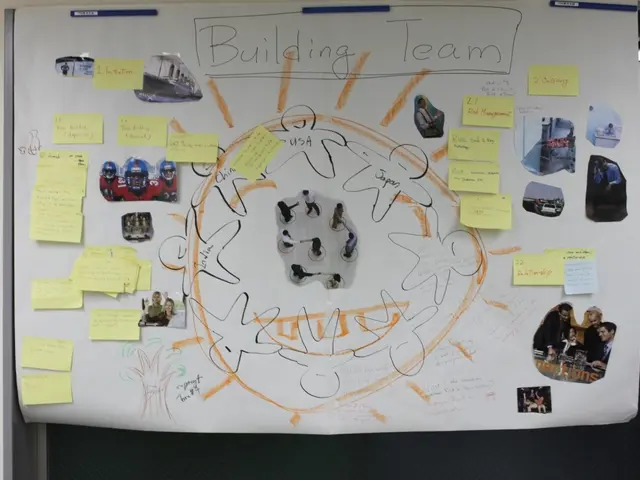Debating Glutes' Fitness: Squats vs Deadlifts - Which one comes out on top?
A solid pair of glutes is a great asset for your everyday life, helping to reduce pain, improve posture, and even boost your performance in sports. When it comes to exercises that target this muscle group, two classics stand out – squats and deadlifts. Both are highly effective, engaging multiple muscles and being extremely functional.
Squats, for example, work your quads and hamstrings while also lighting up your glutes and core, making everyday tasks like sitting, standing, and walking effortless. Deadlifts, on the other hand, have more of a focus on your glutes, hamstrings, and back, but also flex your quads.
Let’s delve deeper into how these two exercise variants work your glutes. During a squat, your glutes help maintain proper alignment in the lower body joints during the lowering (eccentric) phase, keeping stress evenly distributed. As you reverse direction and return to the starting position (concentric phase), your glutes become the primary force behind propelling you upward, driving your hips forward and firing like a rocket.[1]
In the deadlift, your glutes engage to support your body as you move into a hinge, flexing your hips, and then work hard to extend your hips, along with your lower back, hamstrings, and calves, to bring you back up to a standing position.[2]
While both exercises target the glutes, the depth of movement and the range of motion play significant roles in how much they engage this muscle group. Squats engage the quads more due to a greater knee bend, but deadlifts provide a deeper stretch and better post-stretch force production in the glutes, akin to firing a stretched rubber band.[1]
Choosing between squats and deadlifts for maximizing glute development can be tricky, as research shows results vary depending on the study. However, if you had to pick one, several studies suggest that deadlifts engage the gluteus maximus slightly more than squat variations.[3]
That being said, it's worth noting that both exercises still provide excellent benefits for building stronger glutes. Additionally, deadlifts may put more strain on the lower back, so individuals with prior back issues may want to give squats a try.
If you want to supercharge your glute workout, consider adding the hip thrust to your routine. This exercise targets the glutes specifically, requiring weight to be placed on your hips, which you then push upwards into full hip extension. Recent research shows that the hip thrust is more effective than both squats and deadlifts for engaging the gluteus maximus.[4]
Incorporating deadlifts, squats, and the hip thrust into your exercise routine can help you build a stronger, more powerful behind.
References:[1] Femi Betiku, PT, DPT, CSCS – Physical therapist and Pilates instructor in Westchester, New York.[2] Stephen Ranellone, CSCS – Exercise physiologist at Hospital for Special Surgery.[3] Review in the Journal of Sports Science Medicine (2020).[4] 2021 study in the Journal of Sports and Conditioning Research; 2018 study in the Journal of Strength and Conditioning Research.
- Implementing both squats and deadlifts in a workout routine can enhance glute development, with deadlifts potentially engaging the gluteus maximus slightly more than squat variations.
- The depth of movement and range of motion significantly impact the level of glute engagement in both squats and deadlifts, with squats engaging the quads more due to a greater knee bend, but deadlifts providing a deeper stretch and better post-stretch force production in the glutes.
- To further boost glute development, adding the hip thrust exercise to the routine can be beneficial, as it specifically targets the glutes and has been shown to be more effective than both squats and deadlifts for engaging the gluteus maximus.
- News in the Journal of Sports and Conditioning Research from 2021 and the Journal of Strength and Conditioning Research from 2018 highlighted the effectiveness of the hip thrust exercise for targeting the glutes.
- Incorporating a combination of squats, deadlifts, and hip thrusts into a fitness-and-exercise regimen can lead to a stronger, more powerful and healthier gluteus region, aiding in everyday life, sports performance, and overall health-and-wellness.







